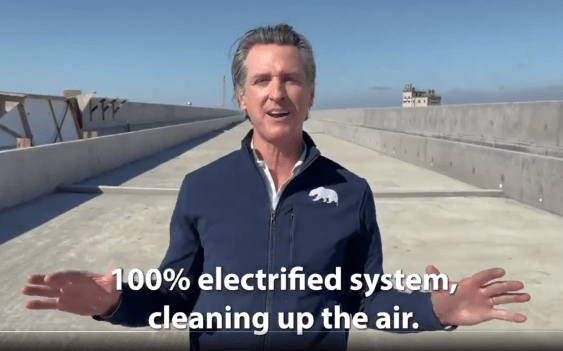Top transportation officials from three global cities -- London, Singapore and Stockholm -- shared their experiences in expanding the use of transit at a panel at the Regional Plan Association's annual conference last Friday. Eyeing those cities, it's easy for Americans to get jealous.
Singapore is doubling the size of its rail network in the next ten years, according to the Singapore Land Transport Authority's Lew Yii Der. Using driverless technology, he added, Singapore will soon be running subway trains as little as 90 seconds apart.
London boosted bus ridership by 60 percent in a decade and recently hit an all-time high for Underground use, said Transport for London's Elaine Seagriff. Projects in the pipeline will add an entire new rail line through the heart of the city and boost capacity in the existing Underground system by 20 percent.
Stockholm plans to spend 8 billion Euros on expansion projects through 2020 for a region of only 2 million people, reported Stockholm Public Transport Managing Director Anders Lindström. In the New York region, per capita spending on that level would come out to $115.5 billion.
It's hard to imagine the U.S.'s cash-strapped transit agencies ever reaching such lofty levels. How did these other cities do it?
It's foolish to call anything a silver bullet, but even so, it's no coincidence that each of these cities do something no U.S. city has done: price the use of scarce road space.
London's phenomenal growth in bus ridership, for example, can be significantly attributed to the fact that surface transit doesn't have to sit in gridlocked traffic, thanks to the city's congestion charge. Analyst Kenneth Small estimates that in the typical American city, bus ridership would jump 31 percent due to the introduction of congestion pricing, without bus service even receiving any of the revenues.
But the money certainly helps. London's congestion charge generated approximately $240 million in 2009, all dedicated to transportation. Stockholm's pricing scheme took in about $112 million in a much smaller region.
The most all-encompassing efforts to put a price on driving, by far, are practiced in Singapore. On that dense island city-state, drivers must pay not only to use the roads, but to own a car at all. Starting in 1990, the government began to ration out permits to own personal vehicles, allowing the total supply to rise by three percent a year, according to Der. Since then, the allowed growth in automobiles has been lowered twice, to its current level of 0.5 percent a year. As a result, there are only 608,958 passengers cars in the entire nation of 5.2 million people. "The going price for a car is almost 80,000 U.S. dollars, just for the certificate," Der said.
Once Singaporeans have paid that much for the mere right to own a car, they also have to pay for the use of the roadway. Prices at 80 tolling stations across Singapore change every three months, based on congestion conditions.
Without competition from subsidized driving, the Singapore transit system is actually able to turn a sizable profit. Though the government helps pay the capital costs of the transit system, Singapore boasts a farebox recovery ratio of 126 percent.
The three systems had other shared characteristics -- system-wide fare integration using smart-card technology chief among them -- but congestion pricing stood out as integral to the success of the systems.
Is there political support in New York for any form of road pricing? It's hard to say. "I really don't want to talk about congestion pricing," said Lhota, calling the question one for elected officials.
"It is a tough political row to hoe," admitted former MTA chief Lee Sander, who moderated the panel. Still, Sander noted, of the three state senators who doomed bridge tolls in 2009, only one is still in office. One is headed to prison and the other may be following soon.
Recent history suggests other reasons to think some form of road pricing could be politically possible in New York. The City Council approved Mayor Bloomberg's congestion pricing plan by a vote of 30 to 20. Assembly Speaker Sheldon Silver endorsed East and Harlem River bridge tolls pegged to the price of a subway fare. And polls showed a sizable majority of New Yorkers in favor of congestion pricing, as long as the revenues were dedicated to the transit system.
The missing piece, these days, is Governor Andrew Cuomo, who seems content to opine about congestion pricing while letting the state's transit system decay.







